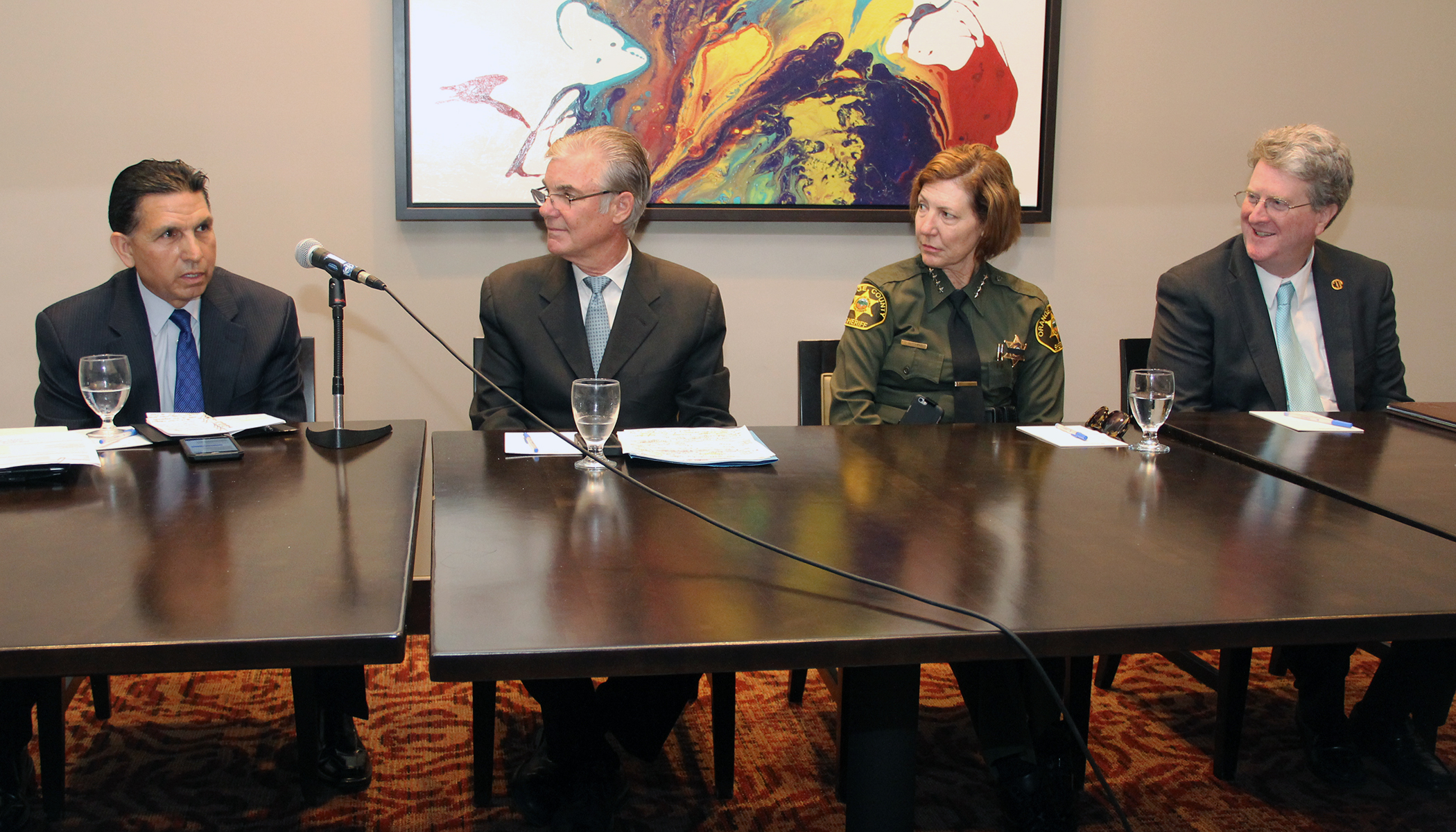
As security threats around the country continue to evolve, so too must the preparations and responses of school officials and law enforcement.
That was the central theme of a special news conference featuring State Superintendent of Public Instruction Tom Torlakson, Orange County Sheriff-Coroner Sandra Hutchens, Orange County Superintendent of Schools Dr. Al Mijares and California Interscholastic Federation Executive Director Roger Blake.
The four state and county leaders convened Wednesday, July 20 for an open discussion on critical school safety issues to kick off the three-day Safe Schools Conference, which took place through Friday, July 22 at the Wyndham Anaheim Garden Grove hotel. Prompted by questions from a handful of news media outlets, the dialogue touched on school safety plans, collaboration with law enforcement, social media dangers and security at after-school events.
“It’s our new reality in America, unfortunately, that no venue is entirely immune,” said Sheriff Hutchens.
Indeed, times have changed, but so have the strategies of law enforcement, according to Hutchens. When she started her career 37 years ago, the protocol for dealing with an active shooter was to wait for SWAT team members to arrive. Now, Hutchens said, patrol officers have the training and equipment to move in swiftly.
“We didn’t start to prepare yesterday,” she said. “We started to prepare many, many years ago, and we’ve always prepared to defend our schools, to defend our children, because that is a top priority for all of us.”
Every year, schools in California are annually required to update their Safe School Plans, which are broken into two major sections: One spells out how a school will respond to different types of emergencies, while a separate section focuses on strategies for promoting positive school cultures.
The panelists agreed these plans can be critical to managing a crisis and should not be left unchanged from year to year. Instead, they should be reviewed rigorously based on constantly evolving threats, as well as best practices.
“There are a lot of threats,” acknowledged Mijares. “There’s the active shooter and there’s an earthquake. So we have to be prepared for everything.”
Torlakson, whose office has created a statewide School and Community Safety Advisory Committee with more than 40 members, suggested students can play an important role on their school and district safety planning committees, as they have access to information and knowledge of trends adults often lack.
Above all, the four leaders urged schools and law enforcement agencies to embrace collaboration at all levels. Specifically, educators should connect with the first responders in their communities and police should have intimate knowledge of the campuses they serve before a crisis occurs.
“The more these services are engaged harmoniously, collaboratively, the more we’re going to be on top of the intelligence,” Mijares said.
Blake, executive director of the CIF, added that security considerations must also extend to athletics and other after-school programs.
“It’s a new reality for all of us,” Blake said. “When we show up at the football game, the baseball game, the volleyball game, we have to be considering other things than just the final score.”
This marks the seventh year of the Safe Schools Conference, which drew more than 500 educators, school workers, elected officials and law enforcement representatives interested in learning more about student safety, as well as its impact on school attendance and academic performance.
Presented by former California Secretary of Education Dave Long through his firm, Dave Long & Associates, in collaboration with OCDE and the Orange County Sheriff’s Department, the three-day event represents a unique partnership between the education community and law enforcement.
Along with three keynote presentations, breakout sessions covered topics including bullying, trends in social media and technology, dropout prevention, active shooter strategies, human trafficking, gang intervention and prevention, alcohol and drug use, mental health and best practices for building positive school cultures.
“Conferences like this help us all as school people,” Blake said. “It’s a new world. It’s a different world, so we need to be educated ourselves.”
You can find more information about the conference here.
